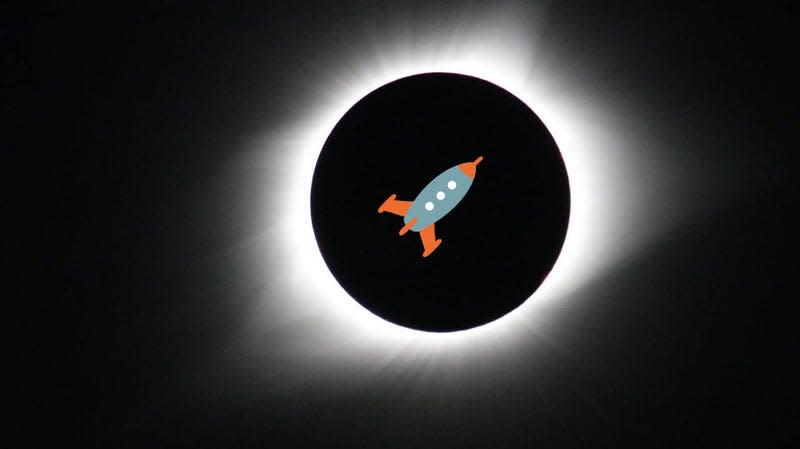NASA Rockets Set to Probe the Moon's Shadow During Upcoming Eclipse

As the Moon wedges itself between Earth and Sun, temporarily dimming the day’s light over parts of our planet, three rockets will take to the skies to observe how those brief moments of darkness affect Earth’s upper atmosphere.
On April 8, NASA will launch three sounding rockets from NASA’s Wallops Flight Facility in Virginia to study the disturbances in the ionosphere during the solar eclipse. The rockets will launch at three different times; 45 minutes before, during, and 45 minutes after the peak time of the eclipse, according to NASA.
The Sun’s sudden disappearance affects part of the planet’s atmosphere, creating disturbances that could possibly interfere with communication systems on Earth.
The ionosphere is part of Earth’s upper atmosphere, and forms the boundary between Earth’s lower atmosphere and the vacuum of space. It contains a large number of electrically charged atoms and molecules, and reflects and refracts radio waves that are used for our communication and navigation systems. During nighttime, the ionosphere thins out because it no longer receives solar radiation, which ionize the atoms and molecules. As a result, the previously ionized particles relax and recombine into neutral particles.
“Understanding the ionosphere and developing models to help us predict disturbances is crucial to making sure our increasingly communication-dependent world operates smoothly,” Aroh Barjatya, a professor of engineering physics at Embry-Riddle Aeronautical University in Florida, and lead scientist of the mission, said in a statement.
The upcoming eclipse presents an opportunity to study changes in the ionosphere during a rapid, localized sunset, as the Sun’s light disappears at an exact time. Each of the rockets will release four secondary instruments the size of a two-liter soda bottle to measure perturbations in the ionosphere, which will help scientists improve current models that predict potential disturbances to communication systems, according to Barjatya.
Sounding rockets, or research rockets, carry science instruments to suborbital space along a parabolic trajectory. Aside from the rockets measuring data on the ionosphere, teams on the ground will also be taking measurements using various means.
These same rockets have been launched once before from the White Sands Test Facility in New Mexico, during the October 2023 annular solar eclipse. The rockets got some new instruments and were refurbished for reuse for the upcoming eclipse. During the previous eclipse, the rockets measured a sharp reduction in the density of charged particles in the atmosphere.
“We saw the perturbations capable of affecting radio communications in the second and third rockets, but not during the first rocket that was before peak local eclipse” Barjatya said. “We are super excited to relaunch them during the total eclipse, to see if the perturbations start at the same altitude and if their magnitude and scale remain the same.”
For more spaceflight in your life, follow us on X and bookmark Gizmodo’s dedicated Spaceflight page.

